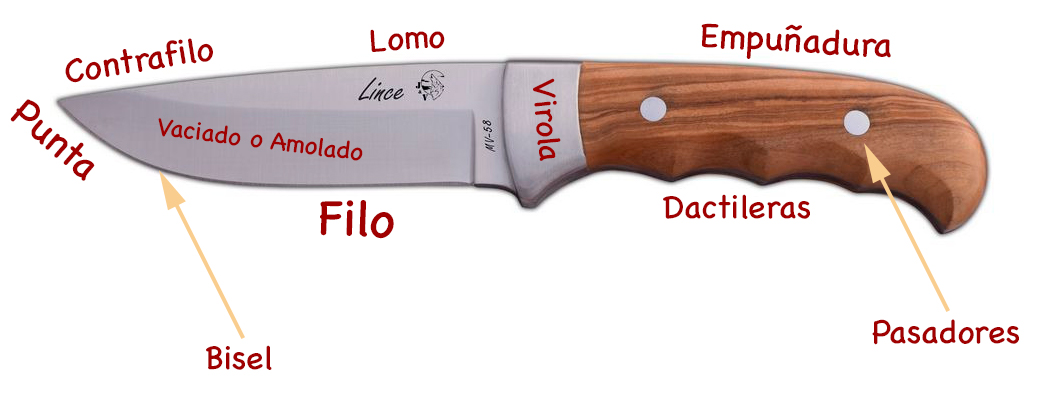What is the Bevel?
The bevel is a fundamental element in the design and functionality of bladed weapons, located on the edge of the blade. Its main function is to optimize the cutting capability of the weapon, providing a specific angle that allows for efficient cutting and piercing. The shape and angle of the bevel are critical in how the weapon interacts with different materials, which is crucial for its performance.
The variability in the angles and widths of the bevel depends on the type of weapon and its intended use. This means that each bladed weapon can present a unique bevel design tailored to its function. Below, we will explore several examples that illustrate the importance of the bevel in different contexts:
- Kitchen knife: This type of knife usually has a wider and less sharp bevel, enhancing precision when cutting soft foods like vegetables and fruits. This design facilitates smooth cutting and minimizes the effort required, making cooking a more enjoyable and efficient activity.
- Tactical knife: Unlike the kitchen knife, this knife features a narrower and sharper bevel, allowing it to easily penetrate hard materials. This characteristic makes it particularly useful in situations where deep and quick cuts are necessary, such as in survival activities or self-defense.

The shape of the bevel also varies significantly depending on the type of weapon. Some examples are:
- Japanese swords: Katanas feature a curved bevel, known as "hamon." This design not only has aesthetic appeal but also improves their cutting capability due to the distinctive shape of the blade, which allows the sword to make safe and effective cuts.
- Machetes: Typically, machetes have a straight and uniform bevel designed to maximize their effectiveness in cutting vegetation, such as grasses and branches. This type of bevel facilitates tasks in rural or jungle environments, where resilience and performance are essential.
The bevel is therefore a critical part not just of performance, but of the user's safety. It is vital to keep the bevel sharp, as a dull edge can decrease the weapon's effectiveness and increase the risk of accidents. An additional effort to make cuts may lead to a higher risk of injuries or damage to the equipment.
For this reason, it is essential to pay attention to the care and maintenance of the bevel, ensuring that these tools remain in optimal working condition. This not only guarantees the durability and effectiveness of knives, swords, and machetes but also contributes to safe and responsible handling of bladed weapons.
Always remember to follow the manufacturer's recommendations regarding sharpening and maintenance to ensure safety and performance in the use of your tools.
















